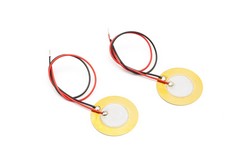A new era in sensing technology
New polymer optical sensing systems can replace current electrical systems in order to improve mechanical processes in a number of fields, including transport. For example, monitoring fuel level in civil aircraft can benefit from optical sensors which are lighter and safer in the face of fire hazards and lightning bolts. Another example involves using optical sensing to monitor acoustic signals and vibration underwater to support geophysical surveying such as for oil exploration and to boost security such as in locating unauthorised foreign submarines. The EU-funded POSSIBLE (Polymer optical sensing system innovation benefits leadership education) project worked with industrial partners to develop both these applications. To achieve its aims, the project developed a complete liquid level gauging system using multiplexed pressure sensors placed at different depths. It was refined using polymer optical Bragg gratings embedded in diaphragms, ideal for use, not only in aircraft applications, but also in areas such as flood control, biochemical processing and water tanks. The technology offers several advantages such as fault tolerance, operation independent of fuel density, resistance to g-forces and temperature insensitivity. Importantly, the project team focused more on the liquid level sensing work than on the acoustic sensing described later, driven by current commercial needs and funding considerations. In the second part of the project, the team worked intensively on building new acoustic and sensing solutions for oil exploration and security applications. It experimented in building an acoustic sensor for operation in water with frequencies of up to 20 kHz. This could replace piezoelectric strain sensors which suffer from limitations related to deployment range, physical size and flexibility. These encouraging research results have been disseminated through publications, journals and events. The technology looks very promising and is set to pave the way for better, more effective sensing systems that will positively impact a number of areas, from undersea exploration to safer aviation.







